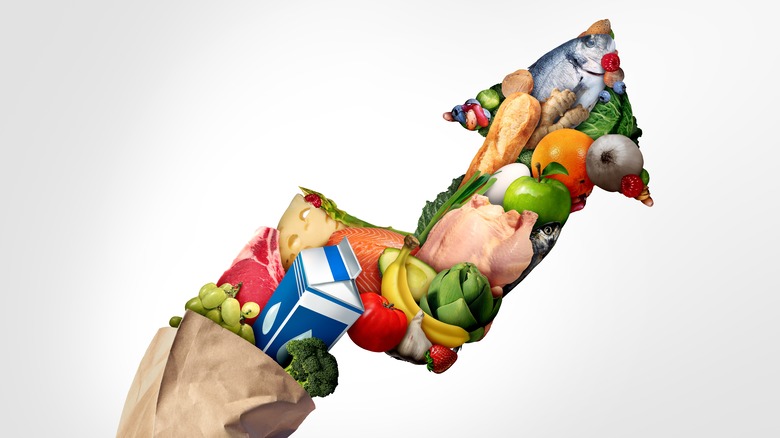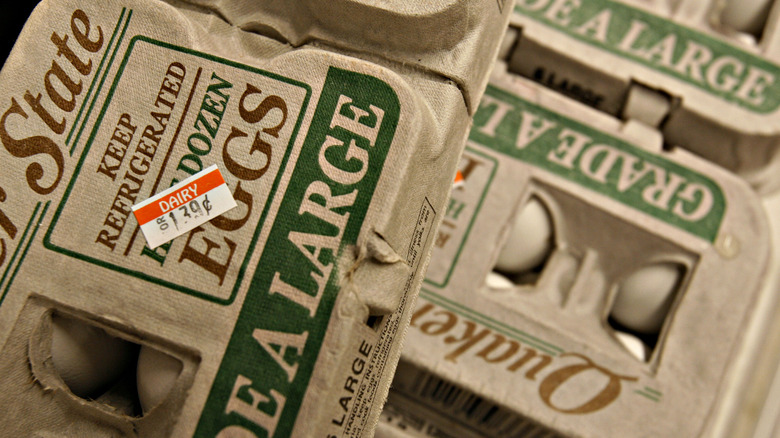The Food That's Seen The Greatest Price Increase From Inflation
It's no secret that inflation has impacted every industry from fuel to furniture, but one place where U.S. consumers are really feeling its day-to-day effects is at the supermarket checkout. In January, grocery prices in the U.S. reached a record-breaking high with the overall price of food costing 6.5% more than it was the previous year, marking the highest rate of inflation since the 1980s.
It doesn't look like things are getting better any time soon. Per AG Web, officials now anticipate the price of food-at-home will continue to increase between 7% and 8% for the rest of 2022. And while there's no denying that everything at the store is more expensive these days, it seems some items have experienced a more dramatic price hike than others. Among the several staple food categories affected by inflation, such as meat and milk, the food that has become the most expensive in recent months when compared to previous prices, is eggs.
Per data shared by the U.S. Bureau of Labor Statistics, between March and April of this year, the average price of a dozen eggs in the U.S. jumped from $2.05 to $2.52, or 23%. And that figure only reflects the average. Some outlets have reported a single carton going for as high as $3 dollars or more in some parts of the country. For reference, just this past December, the average cost for a dozen eggs was just $1.79, which means the cost has nearly doubled.
The cost of eggs have soared
Considering eggs have long been thought of as one of the more affordable forms of animal protein, the record-high prices are likely to leave some consumers wondering what on earth is causing the surge.
In addition to labor and transportation shortages impacting all food prices, the egg industry is experiencing its own challenges that are driving up costs at every level of production, from the raising of hens to the cost of packaging. For one, per Vox, the price of chicken feed has gone up, which accounts for more than 60% of the costs associated with raising egg-laying hens. As a result, some farmers have reduced their flock in an effort to curb feeling the effects of the increase, which in turn, has resulted in a smaller output of eggs.
Another factor contributing to the price hike is that, since February, 29 million egg-laying hens (which represents 9% of the overall egg-laying poultry population in the U.S.) have been wiped out due to the Avian bird flu (via Bloomberg). And since eggs are in pretty much near-constant demand due to the fact that they are both a meal and ingredient in other foods, the short supply has left businesses with little choice but to raise costs.

